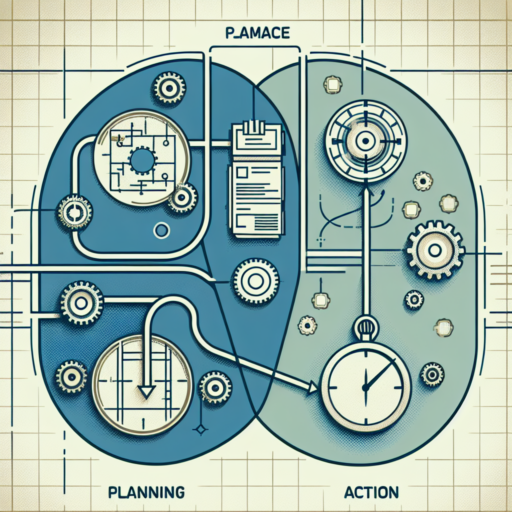Understanding the Basics of Half Marathon Pace Strategy
When preparing for a half marathon, it’s crucial to understand that your pace strategy plays a significant role in not only reaching the finish line but also in how you feel throughout the race and after. A well-thought-out pace strategy can help manage your energy efficiently, preventing the common issue of burning out too early.
One foundational aspect of a successful half marathon pace strategy is recognizing the importance of starting slower than you finish. This approach, often referred to as negative splitting, involves running the second half of the race slightly faster than the first half. It’s a technique that not only conserves energy but also prepares you for a strong finish.
Another key component is the integration of pace runs into your training regimen. Pace runs are workouts where you run at your target half marathon pace. They are essential for teaching your body to become comfortable and efficient at the pace you plan to maintain during the race. Incorporating these runs helps build both the physical and mental endurance needed to maintain a consistent speed over the 13.1-mile distance.
5 Essential Tips to Develop Your Half Marathon Pace Plan
Developing a successful half marathon pace plan is crucial for runners looking to achieve their personal best in this challenging distance. Knowing how to pace yourself effectively can make the difference between hitting your target time and falling short. These essential tips will help you understand and implement an effective pacing strategy for your next half marathon.
Understand Your Current Running Capability
Before you can create a pace plan, it’s essential to have an accurate understanding of your current running ability. This means taking into consideration your recent race times, regular running pace, and overall fitness level. By assessing your current capabilities, you can set a realistic and achievable pace goal for your half marathon.
Incorporate Pace-Specific Training
To meet your half marathon pace goals, including specific training sessions in your routine is crucial. Interval training, tempo runs, and long distance runs at your target pace can help your body adapt to the speed and endurance required. Consistently training at your goal pace will improve your stamina and confidence, making it easier to sustain the target speed on race day.
Listen to Your Body
While pushing yourself is part of training, listening to your body is paramount. If you’re feeling overly fatigued or are experiencing pain, it may be a sign that you’re pushing too hard and risking injury. Adjusting your pace plan and allowing sufficient rest days can help you prevent overtraining and improve your overall performance.
How to Adjust Your Pace for Different Segments of a Half Marathon
Adjusting your pace during a half marathon can greatly influence your overall performance and how you feel throughout the race. Understanding the course’s layout and your personal capabilities is paramount in setting strategic paces for different segments. By dividing the race into manageable segments, you can tailor your energy output to maintain a steady performance, prevent burnout, and possibly achieve a personal best.
Beginning: Start Slow and Steady
In the initial stage of a half marathon, it’s tempting to start off fast due to excitement or an attempt to navigate through the crowd. However, starting too quickly can deplete your energy reserves prematurely. Aim to start slightly slower than your targeted race pace. This conservative approach allows your body to warm up properly and prepares you for a strong finish. Adjusting your pace by 10-20 seconds slower per mile than your goal pace can help ensure that you have enough energy for the latter parts of the race.
Mid-Race: Find Your Rhythm
As you progress into the heart of the race, it’s vital to settle into your planned pace. By now, the crowd has typically thinned out, providing the opportunity to focus on your rhythm and breathing. This is the time to adhere closely to the pace you’ve trained for, making minor adjustments based on how you feel. If the course includes varying elevations, be prepared to slightly decrease your speed on uphill segments and selectively increase your pace downhill, always focusing on effort consistency rather than speed.
No se han encontrado productos.
The Role of Negative Split Strategy in Half Marathon Success
Implementing a negative split strategy in a half marathon involves dividing the race into two halves and running the second half faster than the first. This approach plays a crucial role in achieving not only a personal best but also in managing the runner’s energy efficiently throughout the race. By conservatively pacing the first half, athletes can conserve energy and reduce the risk of burning out, setting the stage for a strong finish.
Using a negative split strategy also aids in better muscle and energy management. In the initial stages of the race, running at a controlled and steady pace allows the body to use energy more efficiently, reserving the stored glycogen for the latter part of the race. As fatigue sets in, the ability to increase the pace might seem counterintuitive, yet it’s during this second half that the strategy pays off, allowing runners to pass competitors who might have expended too much energy too soon.
Another essential aspect of the negative split strategy is its psychological benefit. Knowing that you have reserved energy for the second half can boost confidence and provide a psychological edge. Runners often report feeling more in control and mentally engaged when they have a clear strategy to execute, especially one that culminates in a strong, faster finish. This mental resilience is as crucial as physical stamina in achieving half marathon success.
Common Mistakes to Avoid with Half Marathon Pacing
When training for a half marathon, pacing is a critical aspect that can make or break your race day experience. Many runners, from beginners to the more experienced, often fall into several common traps. By recognizing and avoiding these pitfalls, you can enhance your performance and enjoyment of the race.
Starting Too Fast is perhaps the most common pacing mistake. The excitement of the race, combined with well-rested legs, can tempt runners to set off at a pace that feels easy in the beginning but becomes unsustainable. This often leads to hitting «the wall» much sooner than expected, turning the second half of the race into a struggle to maintain pace.
Ignoring Your Training Pace
Another mistake is disregarding the pace you’ve maintained during training. It’s crucial to develop and stick to a pacing strategy based on your training experiences. Altering your pace significantly on race day can lead to premature fatigue, making the latter stages of the race unnecessarily difficult.
Lastly, neglecting race day conditions can also hamper your pacing strategy. Weather, terrain, and crowd support can all influence your pace. Failing to adjust your pacing plan to accommodate these factors might result in a performance that doesn’t reflect your true capability.
How Weather and Course Terrain Influence Your Half Marathon Pace
Understanding how weather and course terrain influence your half marathon pace is crucial for runners aiming to optimize their performance. These elements can drastically alter the challenges you face during a race and directly impact your speed, energy levels, and overall strategy.
Impact of Weather Conditions
Variable weather conditions such as temperature, humidity, and wind can significantly affect a runner’s pace in a half marathon. For example, high temperatures and humidity levels can lead to quicker dehydration and increased heart rate, forcing runners to slow their pace to avoid overheating. Conversely, cooler temperatures might enhance performance, allowing for a faster pace without the risk of heat exhaustion. Wind speed and direction also play a critical role, as headwinds can slow you down, while tailwinds can provide a much-needed boost.
Influence of Course Terrain
The terrain of a half marathon course can vary from flat and fast routes to hilly and challenging trails. A flat course generally allows for a more consistent and faster pace, as runners can maintain their rhythm without the interruption of elevation changes. On the other hand, a course with significant elevation gain requires a strategic approach, where runners might need to conserve energy on uphill sections and capitalize on downhill parts to make up time. The variability in terrain necessitates adjustments in pace and effort, making knowledge of the course profile an essential part of race preparation.
In conclusion, both weather conditions and course terrain are pivotal factors that can influence your half marathon pace. A successful strategy involves preparing for these variables through training and race-day tactics, enabling you to adjust your pace accordingly for optimal performance.
Using Pace Bands and Apps to Stay on Track During Your Half Marathon
Running a half marathon requires not just grit and training but also a strategic approach to pacing. Pace bands and running apps have emerged as essential tools for runners aiming to maintain a consistent pace throughout their race. By using these tools, athletes can ensure they’re not starting too fast, which often leads to burning out before the finish line, or too slow, risking not meeting their target time. This delicate balance of pace is what makes or breaks a half marathon experience.
Pace bands are simple yet effective. They are essentially wristbands that have pre-calculated splits for each mile or kilometer of the race, based on your goal finish time. Many runners prefer them for their simplicity and ease of use. Since they do not require any battery or satellite signals, they are incredibly reliable. Running apps, on the other hand, offer a high-tech solution. They can provide real-time feedback on your current pace, distance covered, and even projected finish time. Additionally, many apps include features like audio cues and personalized coaching plans to further assist runners in staying on course.
While the choice between using a pace band or an app comes down to personal preference, employing either (or both) can vastly improve your race day performance. For runners who thrive on precise data and analytics, running apps are the ideal choice. Meanwhile, those who prefer a simpler, more straightforward approach may find pace lvdsbands to be the perfect solution. At the end of the day, the key is finding a method that works best for you and sticking with it throughout your training and the race itself.
Training Techniques to Improve Your Half Marathon Pace
Improving your half marathon pace requires a strategic approach that combines different training techniques designed to enhance endurance, speed, and efficiency. By incorporating a variety of workout types into your training plan, you can develop the strength and stamina needed to achieve a new personal best in your next half marathon. Here, we delve into some effective training techniques that can help you pick up the pace and cross the finish line faster than ever before.
Interval Training
Interval training is a cornerstone for runners looking to improve their pace. This technique involves alternating between segments of high-intensity running and periods of low-intensity recovery. Not only does interval training boost your cardiovascular efficiency, but it also increases your lactate threshold, allowing you to sustain a faster pace for longer distances. Incorporating intervals into your weekly routine can significantly improve your half marathon performance.
Tempo Runs
Tempo runs, or threshold runs, are another key element in enhancing your half marathon pace. By running at a comfortably hard pace, just outside your comfort zone, you teach your body to process and clear lactate more efficiently. This training technique raises your anaerobic threshold, which is critical for maintaining speed over the 13.1-mile distance. Regular tempo runs ensure that you develop the ability to hold a faster pace without hitting the proverbial wall.
Long Runs
Long runs are essential for building the endurance necessary for a half marathon. Gradually increasing the distance of your weekly long run prepares your body for the demands of covering 13.1 miles. These runs improve your muscular and cardiovascular systems, enhancing your overall stamina and resilience. With consistent long runs, you’ll find that maintaining your target half marathon pace becomes increasingly achievable.
Real-Life Examples of Successful Half Marathon Pace Strategies
Exploring real-life examples of successful half marathon pace strategies illuminates the diverse approaches runners take to achieve their best performance. From elite athletes to dedicated amateurs, understanding how individuals tailor their pacing to their strengths and race conditions can offer valuable insights for runners of all levels planning their own race strategies.
Negative Split Strategy
One compelling example involves utilizing a negative split strategy, where the runner intentionally starts at a pace slower than their average race pace, gradually increasing speed in the second half. This approach was famously executed by an elite runner in the Berlin Half Marathon, who split the first 10K at a conservatively fast pace, before steadily increasing speed, securing a personal best (PB) in the process. The success of this strategy lies in preserving energy for a strong finish, highlighting the importance of self-awareness and discipline.
Even Pace Strategy
Conversely, the even pace strategy maintains a consistent speed throughout the race. A prime example of this is seen in a season runner’s triumphant London Half Marathon, where maintaining an even pace from start to finish enabled them to not only achieve a PB but also finish feeling strong and in control. This strategy demands a deep understanding of one’s capabilities and the discipline to adhere to a predetermined pace, regardless of the adrenaline and competitive environment.
These real-life stories underline that there is no one-size-fits-all answer to half marathon pace strategy. What works for one runner may not suit another, underscoring the significance of personalized pace planning and the role of experience in crafting a successful race strategy.
Frequently Asked Questions About Half Marathon Pace Strategy
Planning your pace strategy for a half marathon can be a crucial aspect of your race day success. Understanding the common queries runners have about pacing can help you avoid common pitfalls and set you up for a better, more enjoyable race experience.
What is the Ideal Pace for a Beginner?
Many first-time half marathoners wonder how fast they should be running. The simple answer is: it depends on your current fitness level, running background, and overall goals. A good starting point is to aim for a pace that feels comfortably challenging: you should be able to maintain it while holding a brief conversation. This typically falls within 60-70% of your max heart rate for new runners.
How Should I Adjust My Pace Based on the Course?
Course profile plays a significant role in pacing strategy. For hilly courses, the effort-based pacing approach is advisable. This means running by feel rather than sticking rigidly to a predetermined pace. Focus on maintaining a consistent effort on uphills, which might mean slowing down, and then using the downhills to gently pick up speed without overstraining. It’s all about balance and listening to your body to avoid burnout.
Can Weather Affect My Half Marathon Pace?
Absolutely. Weather conditions can have a big impact on your performance and pace. Hot, humid days necessitate a slower pace, while cooler weather can be ideal for running faster times. It’s important to adjust your expectations and pacing strategy based on the forecasted weather conditions to prevent overheating and dehydration, or on the flip side, to maximize your performance in favorable conditions.




